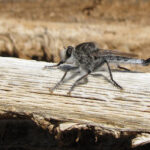On a crisp autumn day, enjoying the outdoors can be truly delightful. Perhaps you relish a brisk walk through the woods, admiring the vibrant colors of the changing leaves. The cool autumn air is also perfect for engaging in outdoor activities before the chill of winter encourages us to stay indoors.
If you’re outside and a gentle breeze starts to blow, it might be the ideal moment for a fun and engaging activity: flying a kite!
While kite flying is often seen as simple fun, it’s also surprisingly educational. Beyond understanding the mechanics of kite construction, you can also learn about weather patterns and basic physics principles.
One common question arises when preparing to fly a kite: How Much Wind Do You Need To Fly A Kite? After all, wind is essential, right? But can there be too much wind for kite flying?
The amount of wind necessary to fly a kite varies based on several factors. One key aspect is the kite’s shape. Some kites are designed to be highly aerodynamic. This means they are engineered to maximize lift even in the lightest breezes, requiring minimal wind to become airborne.
(Alt: Child running with kite in wind, illustrating kite flying fun)
The size and weight of your kite also significantly influence the wind requirement. Larger kites, due to their increased surface area, tend to catch more wind and may require less wind to fly. Conversely, heavier kites need more wind to generate enough lift to overcome their weight and ascend into the sky.
Experts generally agree that most standard kites perform optimally in light breezes ranging from 4 to 10 miles per hour. A simple way to gauge if there’s sufficient wind is to feel a gentle breeze on your face. Other visual indicators include observing leaves rustling on trees and flags waving in the wind. These are good signs that the wind conditions are likely suitable for kite flying.
However, it’s important to recognize that there can definitely be too much wind for safe and enjoyable kite flying. If you hear flags snapping loudly in the wind, notice entire trees swaying dramatically, or feel as though you might be blown off balance, it’s probably too windy to fly a kite. Even if you manage to launch your kite, strong winds can become uncontrollable, potentially damaging your kite by causing it to crash forcefully to the ground.
(Alt: Rustling leaves on branch, showing visual sign of light wind for kite flying)
Even when the breeze seems perfect, selecting the right location is crucial. For the best kite-flying experience, choose a wide, open space, away from obstacles. Obstacles like trees, buildings, and hills can create turbulent winds. Turbulence refers to irregular and unpredictable wind patterns that can make kite flying difficult and less enjoyable.
Turbulence occurs when wind flows around obstructions, disrupting the smooth airflow needed for stable kite flying. A general guideline, known as the “rule of turbulence,” suggests that turbulent wind conditions can extend downwind for a distance of up to 10 times the height of an obstacle. Therefore, it’s essential not only to avoid being directly near obstacles but also to maintain a considerable distance downwind from them.
Choosing an open area away from obstructions will significantly enhance your kite-flying adventure. By understanding the relationship between kite size, kite design, and wind speed, you can ensure you have just the right amount of wind for a successful and exhilarating day of flying kites.
